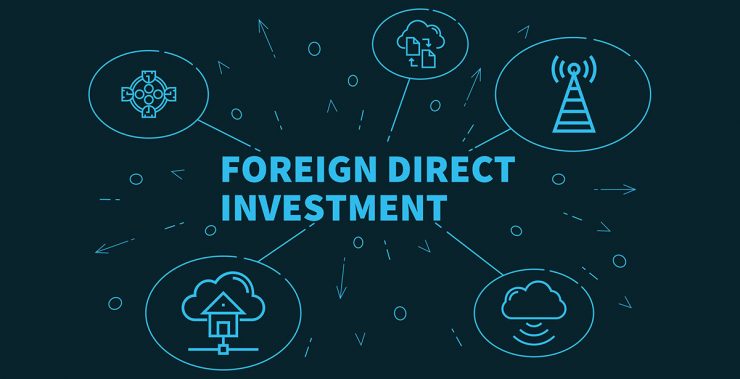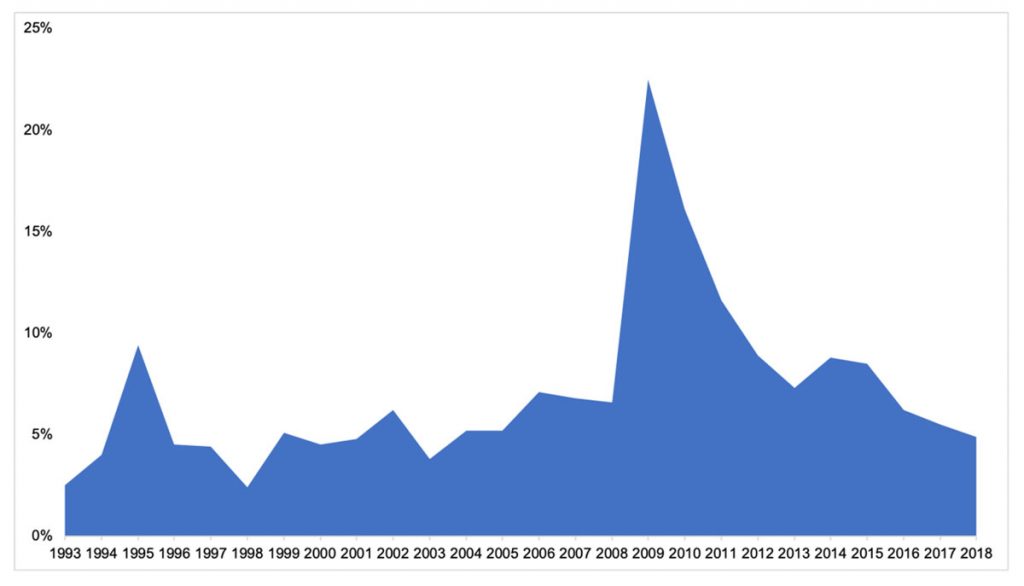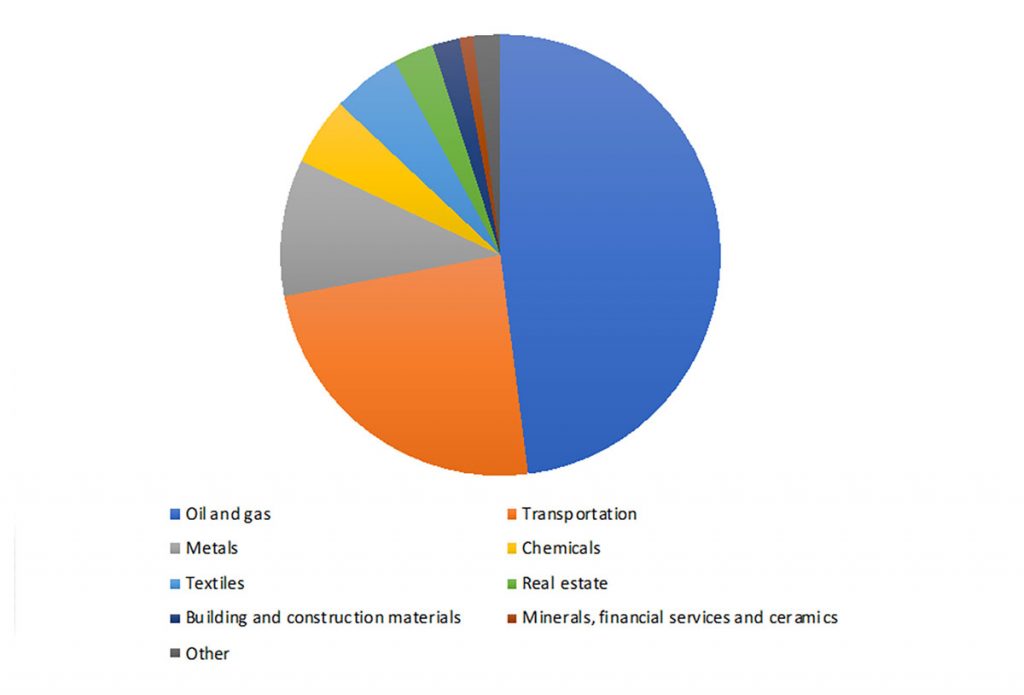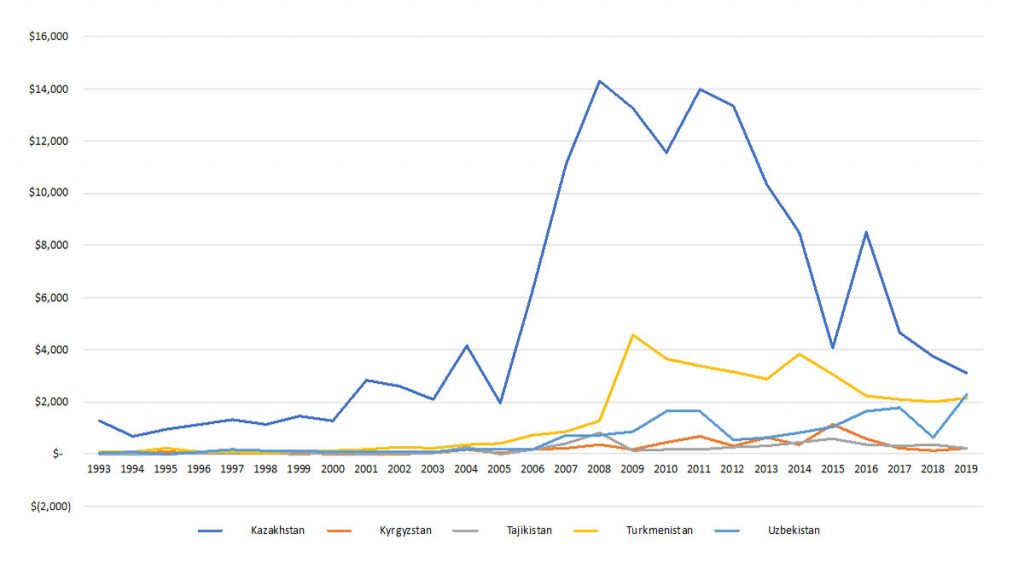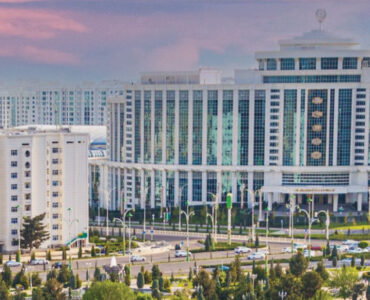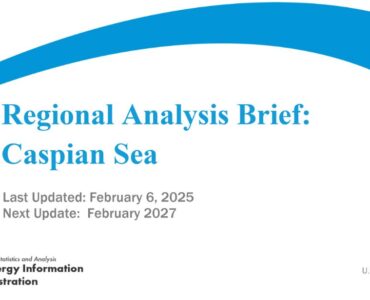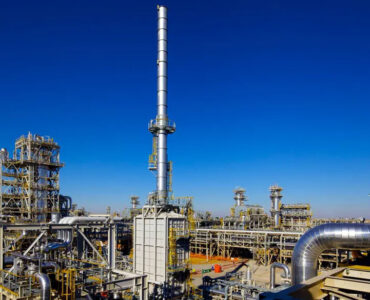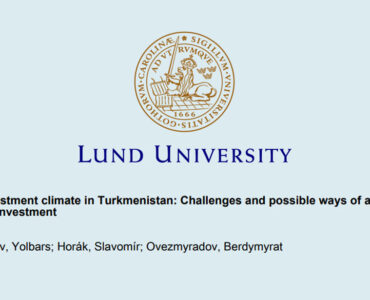According to the data from the World Development Indicators by the World Bank, foreign direct investment inflows to Turkmenistan jumped from 6.6% in 2008 to 22.5% in 2009, which is 240% increase. However, it steadily decreased overtime reaching less than 5% by 2018. This drop is partially caused by the lack of appropriate measures to attract foreign investors, who want legal protection and economic incentives. It is a lost opportunity for the country to create more jobs, develop human capital, promote economic growth and improve international trade.
Foreign direct investment (FDI) is a cross-border investment in which a company takes controlling ownership in a business entity in another country. Investors gain full or partial control over a foreign-based entity as they have to possess at least 10% of voting power (IMF). A company might decide to merge with or acquire an existing business (mergers & acquisitions) or set up a brand-new business (greenfield FDI) overseas.
What are the different types of FDI?
- Horizontal – a company establishes the same type of business operation in a foreign country. Most FDI is horizontal. Example, Petronas sets up a business in Turkmenistan to explore and produce oil and gas as it does in Malaysia.
- Vertical – a company sets up new business activities in a foreign country that are different but related to its main business. Example, Çalık Holdings, a Turkish textile manufacturer, invests in cotton production in Turkmenistan.
- Conglomerate – a company sets up a totally new business activity in a foreign country in a field unrelated to its existing business. Example, Hyundai, a South Korean automotive manufacturer, invests in petrochemicals facility in Turkmenistan.
Is FDI good for Turkmenistan?
According to OECD and relevant literature on the subject, FDI is beneficial for Turkmenistan as it can:
- Create stable and long-lasting links between economies;
- Facilitate transfer of knowledge, skills and technology;
- Support international trade through access to foreign markets;
- Contribute to country’s economic growth;
- Support country’s development program;
- Lead to trade and business openness;
- Complement domestic financial resources;
- Generate employment opportunities;
- Enhance national income growth;
- Improve the welfare of its citizens.
Who is investing in Turkmenistan, how much and in which sectors?
Investment, also known as gross fixed capital formation, includes spending on things that can improve future productivity such as land improvements, purchase of new machinery or equipment, and construction of plants, roads, schools or industrial buildings. Investment to GDP ratio, looks at these kinds of spending as a percentage of GDP. The investment to GDP ratio in Turkmenistan was 47% in 2012, which is one of the highest in the world. In comparison, for the same period for Kazakhstan it was 25%, Kyrgyzstan – 35%, Uzbekistan – 26% and Tajikistan – 23%.
However, public investment in Turkmenistan exceeds private investment significantly. Only 10% of the investments come from the private sector, which is much lower compared to other countries of similar income levels. Of the total investments, foreign direct investment (FDI) accounts for 20%, of which 80% is directed to industry (mainly oil and gas). The main sources of FDI are China, Turkey, and Japan which primarily invest in the extractive industries, construction materials and chemicals (World Bank).
As the figure 1 illustrates, FDI inflows to Turkmenistan jumped from 6.6% in 2008 to 22.5% in 2009, which is 240% increase. However, it steadily decreased overtime reaching less than 5% by 2018.
Figure 1. FDI net inflows to Turkmenistan as % of GDP
Source: World Development Indicators
According to OECD, between 2003 and 2017, Turkmenistan attracted over $12 billion greenfield FDI projects. Greenfield FDI is when a foreign company sets up a brand-new business in Turkmenistan, instead of investing in existing enterprise. In comparison, Uzbekistan received $26.8 billion, Kyrgyzstan $6.2 billion and Tajikistan $6.9 billion. Near half of these greenfield investments in Turkmenistan are in oil and gas sectors (48%), followed by transportation (24%) and metals (10%).
Cumulated greenfield FDI in Turkmenistan by economic activity, 2003-2017
Source: OECD
In 2020 inflows of FDI to Turkmenistan decreased by 45% and were at $1.2 billion. Country’s export revenues and investment projects have also declined significantly during the COVID-19 pandemic given the fall in international demand for hydrocarbons. China, which is Turkmenistan’s major trading and investment partner, significantly decreased its import of Turkmen gas. For instance, the construction of the fourth branch (Line D) of the Central Asia–China gas pipeline was postponed until 2022 and the Turkmenistan–Afghanistan–Pakistan–India (TAPI) gas pipeline until 2023. Moreover, the Turkmen government continued strict capital control on FDI which further inhibited initiation of new hydrocarbons projects (World Investment Report, 2021).
Table 1. Value of FDI inflows and percentage change for selected Central Asian countries 2020
Source: World Investment Report 2021
While overtime, Turkmenistan received the 2nd largest inflow of FDI after Kazakhstan, in 2019 and 2020 Uzbekistan received more FDI than Turkmenistan.
Figure 2. Annual FDI inward flows and stock in Central Asia, 1993-2019 (million $)
Source: UNCTAD
How to attract more FDI to Turkmenistan?
As the US State Department describes, the investment climate and FDI are compromised in Turkmenistan given the endemic corruption, lack of rule of law, weak and opaque commercial regulatory regime, and strict currency controls. It considers Turkmenistan as a high risk for U.S. FDI. As the report elaborates, Turkmen government does not incentivize FDI outside the petroleum industry and delays payment to foreign companies. Although Turkmenistan introduces and amends laws to meet international standards on an ongoing basis, in practice they are not enforced consistently. There is no guarantee for legal protection against government expropriation of assets and there is no independent judiciary system.
A 2020 study on ‘the determinants of foreign direct investment in Central Asian region’ revealed five variables that are key to attracting FDI to the region. These include – FDI (previous year), GDP growth, labour force, trade openness and tax regulations.
Based on the existing literature the following factors are key to attracting FDI:
- High and stable GDP growth;
- Educated and skilled workforce;
- Low labour cost;
- Well-functioning rule of law;
- Trade openness;
- Favourable tax system;
- Diversified FDI (e.g. in non- hydrocarbon industries).
Why should you care about FDI?
FDI is important for Turkmenistan’s long-term socioeconomic development. If done well, it can be beneficial for you and your peers because FDI can:
- Create jobs and increase income – by building new businesses, creating new jobs in leading sectors and paying higher wages;
- Develop human capital – by improving skills and expertise of Turkmen workers through transfer of knowledge and technology, international experience and improved workforce productivity;
- Stimulate country’s economic development – by improving business environment, making it easier to start and run businesses, attracting foreign funding, and improving people’s living standards;
- Improve international trade – by integrating Turkmen businesses into the global market, encouraging export of Turkmen products, building partnerships with leading foreign companies and improving competitiveness of Turkmen businesses.
INFOGRAPHIC VERSION OF ARTICLE
References
Ashurov S, Othman AHA, Bin Rosman R, Bin Haron R (2020), “The determinants of foreign direct investment in Central Asian region: A case study of Tajikistan, Kazakhstan, Kyrgyzstan, Turkmenistan and Uzbekistan.”
Benefits and advantages of FDI
Foreign direct investment (FDI)
Investment as percent of GDP by country
2021 Investment Climate Statements: Turkmenistan
Gross capital formation (% of GDP)
OECD: Chapter 8. Investment in sustainable infrastructure in Turkmenistan
Update on the Benchmark Definition of Foreign Direct Investment
The World Bank: Turkmenistan – Country engagement note for the period FY2016-17World Investment Report, 2021

